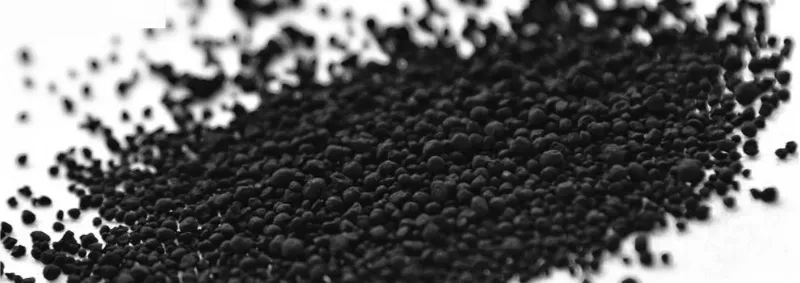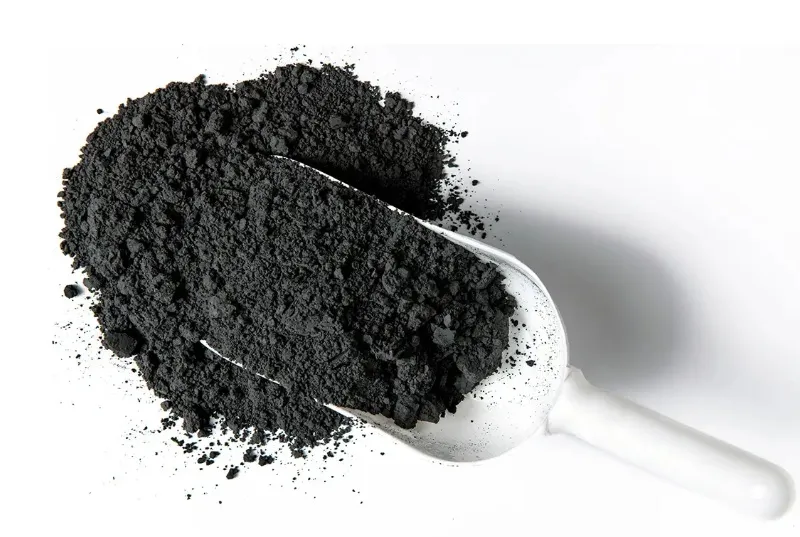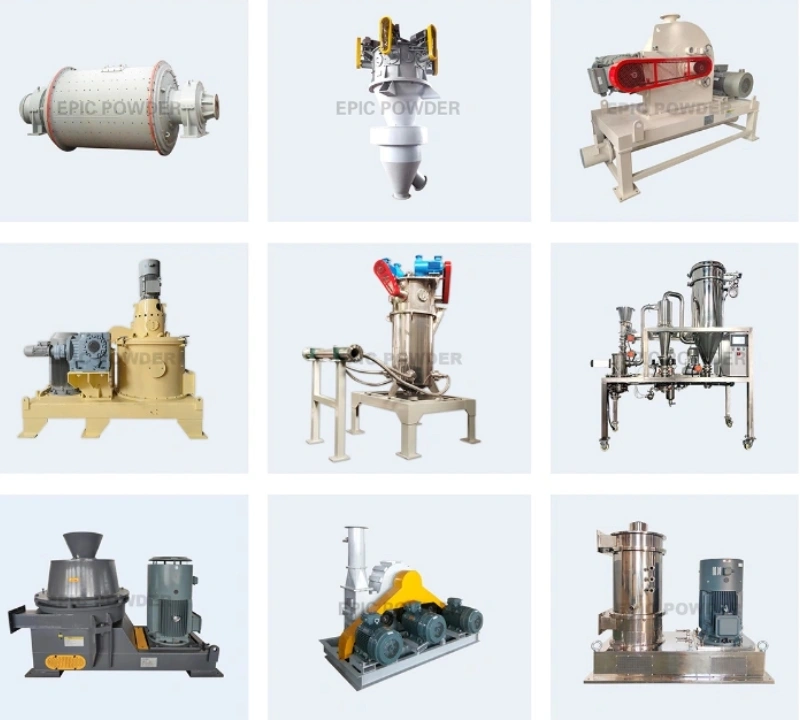Pyrolysis carbon black (also known as recovered carbon black, rCB) is a solid product obtained from high-temperature pyrolysis of waste tires, waste rubber, and other organic wastes under oxygen-free or oxygen-limited conditions.
- Core Source: Mainly comes from tire recycling. In pyrolysis plants, waste tires are fed into a closed reactor, where heating decomposes them into fuel oil, combustible gas, steel wire, and pyrolysis carbon black.

Difference from Conventional Carbon Black
Conventional Carbon Black: Produced by incomplete combustion of petroleum or natural gas. The process is controlled, yielding uniform purity, structure, and surface chemistry.
Pyrolysis Carbon Black: Composition is more complex, containing inorganic impurities (zinc, sulfur, silica, ash) and residual hydrocarbons from tire additives. Its surface activity is low, structure irregular, and direct performance significantly lower than conventional carbon black.
Thus, modification is essential before rCB can be reused as reinforcing filler in rubber, plastics, and other high-value applications, ensuring circular utilization of resources.
Key Performance Characteristics of rCB
- Surface Inertness: Lacks active functional groups (–OH, –COOH), resulting in poor compatibility and weak bonding with polymer matrices.
- High Impurity Content: Contains considerable ash (inorganic salts, metal oxides), sulfur, and residual hydrocarbons, which reduce product purity and performance.
- Irregular Aggregate Structure: Typically exhibits lower structure degree (DBP absorption) than conventional carbon black, leading to weaker reinforcement.
- Broad Particle Size Distribution: Although comparable in size to N550–N990 carbon black, distribution is uneven.
Overall, unmodified pyrolysis carbon black performs poorly: weak reinforcement, poor dispersibility, and reduction of composite mechanical properties (tensile strength, tear strength, wear resistance).

Conventional Modification Methods and Effects
Physical Modification
- Grinding/Milling: Using ball mills, jet mills, etc. to break large aggregates. Improves dispersibility, but excessive milling may damage aggregate structure.
- Pelletizing: Extrusion granulation forms uniform particles, reduces dust, and improves bulk density. Enhances processability, but not surface activity.
Chemical Modification (most effective and widely used)
- Surface Oxidation: Treatment with oxidizing agents (nitric acid, hydrogen peroxide, ozone) or thermal oxidation in air introduces oxygen-containing functional groups (–COOH, –OH, –C=O). Improves surface energy, hydrophilicity, and interfacial bonding with polar polymers (e.g., nylon). This is the mainstream, cost-effective approach.
- Grafting Modification: Grafting specific polymers or coupling agents (e.g., silane KH-550, TESPT) onto rCB surfaces to tailor compatibility with certain matrices. Significantly enhances bonding with silicone rubber or tire compounds.
- Surface Coating: Coating with resins, surfactants, or low-molecular-weight polymers improves dispersibility and processability, though coatings may degrade during processing.

Future Outlook
- Green and Low-Cost Technologies: Development of eco-friendly processes (e.g., plasma treatment, bio-modification) while lowering costs.
- High-Value Applications: Deep modification (e.g., graphitization) to upgrade rCB from rubber filler to functional material (e.g., battery electrodes, adsorbents).
- Standardization and Intelligent Processing: Establishing rapid detection and evaluation standards for different rCB sources, combined with AI to optimize modification parameters for precise treatment.
Modification is the key step in transforming rCB from “waste” to “resource.” Through continuous innovation, not only can black pollution be reduced, but circular economy and carbon-neutrality goals can also be advanced.
Epic Powder
With over 20 years of expertise in ultrafine grinding and modification technologies, Epic Powder provides advanced solutions for rCB processing. By integrating milling, classification, and surface modification, Epic Powder helps transform pyrolysis carbon black into high-value functional materials, enabling sustainable recycling and contributing to a greener future.
